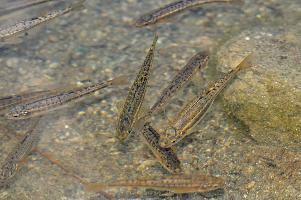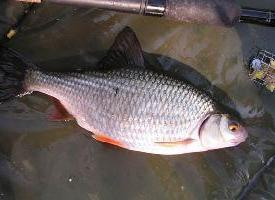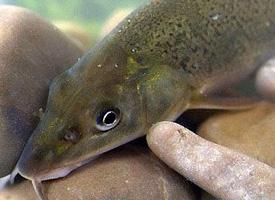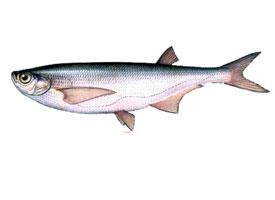
Poids et mesures
| Longueur | de 6 à 10 cm |
|---|
Description de l'animal
The Eurasian minnow, scientifically known as Phoxinus phoxinus, is a small-sized freshwater fish belonging to the Cyprinidae family, which encompasses many other species of carp and minnows. This species is native to the temperate waters of Eurasia, ranging from Great Britain and France in the west, across central and northern Europe, and into Asia, extending as far as Siberia. It is a highly adaptable fish that can be found in a variety of freshwater habitats, including rivers, streams, lakes, and ponds, often preferring areas with clear, cool water and a moderate current.Adult Eurasian minnows are typically small, usually measuring between 5 to 10 cm in length, although they can occasionally grow up to 14 cm. They possess a slender, elongated body that is somewhat laterally compressed, with a dorsal profile that is more curved than the ventral side. Their scales are relatively small and tightly packed, giving their skin a smooth appearance. The coloration of the Eurasian minnow can vary significantly depending on factors such as age, sex, and habitat. Generally, their backs are dark, ranging from olive green to brown, while the sides are lighter, often displaying a silvery sheen, and the belly is usually white or cream. A distinctive series of dark vertical bars or blotches may be present along the flanks, and during the breeding season, males can develop bright red bellies and enlarged fins, making them quite colorful.
The diet of the Eurasian minnow primarily consists of invertebrates, algae, detritus, and plant matter, indicating its omnivorous nature. They are known to be social creatures, often forming large schools, especially in feeding or breeding grounds. This schooling behavior is thought to provide protection from predators, as well as increased efficiency in locating food.
Reproduction in the Eurasian minnow typically occurs from late spring to early summer when water temperatures rise. They are oviparous, with females laying hundreds of eggs in shallow waters over vegetation or gravel beds, where males then fertilize them. The eggs are adhesive and cling to the substrate until they hatch. The larvae and juveniles are highly vulnerable to predation and rely on the cover of vegetation for protection.
Eurasian minnows play a significant role in their ecosystems, acting as both predators of smaller organisms and prey for larger aquatic and terrestrial animals, such as birds, larger fish, and mammals. Despite facing threats from habitat destruction, pollution, and competition with invasive species, the Eurasian minnow has maintained a stable population in many parts of its range, partly due to its adaptability and wide distribution.
In conclusion, the Eurasian minnow (Phoxinus phoxinus) is a fascinating and resilient species, with a wide range and a variety of behaviors that have allowed it to thrive in diverse freshwater ecosystems across Eurasia. Its presence is indicative of healthy, unpolluted water bodies and, as such, serves as an important indicator species for environmental monitoring and conservation efforts.
Animaux similaires
Nouvelles photos d'animaux
Top 10 des animaux
- Dolphin gull (Leucophaeus scoresbii)
- Japanese macaque (Macaca fuscata)
- Greek tortoise (Testudo graeca)
- Stone loach (Barbatula barbatula)
- Galápagos tortoise (Geochelone nigra complex)
- Russian tortoise (Testudo horsfieldii)
- Diana monkey (Cercopithecus diana)
- Moustached guenon (Cercopithecus cephus)
- Common flying dragon (Draco volans)
- Galápagos penguin (Spheniscus mendiculus)


